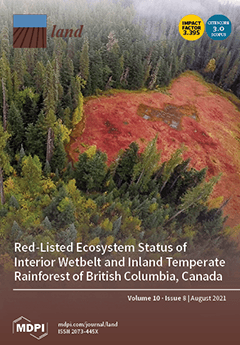Regional land use change and ecological security are important fields and have been popular issues in global change research in recent years. Regional habitat quality is also an important embodiment of the service function and health of ecosystems. Taking Shiyan City of Hubei Province as an example, the spatiotemporal differences in habitat quality in Shiyan City were evaluated using the habitat quality module of the InVEST model and GIS spatial analysis method based on DEM and land use data from 2000, 2005, 2010, 2015, and 2020. According to the habitat quality index values, the habitats were divided into four levels indicating habitat quality: I (very bad), II (bad), III (good), and IV (excellent), and the topographic gradient effect of habitat quality was studied using the topographic position index. The results show the following. (1) The habitat quality of Shiyan City showed relatively high and obvious spatial heterogeneity overall and, more specifically, was high in the northwest and southwest, moderate in the center, and low in the northeast. The higher quality habitats (levels III, IV) were mainly distributed in mountain and hill areas and water areas, while those with lower quality habitats (levels I, II) were mainly distributed in agricultural urban areas. (2) From 2000 to 2020, the overall average habitat quality of Shiyan City first increased, then decreased, and then increased again. Additionally, the habitat area increased with an improvement in the level. There was a trend in habitat transformation moving from low to high quality level, showing a spatial pattern of “rising in the southwest and falling in the northeast”. (3) The habitat quality in the water area and woodland area was the highest, followed by grassland, and that of cultivated land was the lowest. From 2000 to 2020, the habitat quality of cultivated land, woodland, and grassland decreased slightly, while the habitat quality of water increased significantly. (4) The higher the level of the topographic position index, the smaller the change range of land use types with time. The terrain gradient effect of habitat quality was significant. With the increase in terrain level, the average habitat quality correspondingly improved, but the increasing range became smaller and smaller. These results are helpful in revealing the spatiotemporal evolution of habitat quality caused by land use changes in Shiyan City and can provide a scientific basis for the optimization of regional ecosystem patterns and land use planning and management, and they are of great significance for planning the rational and sustainable use of land resources and the construction of an ecological civilization.
Full article





